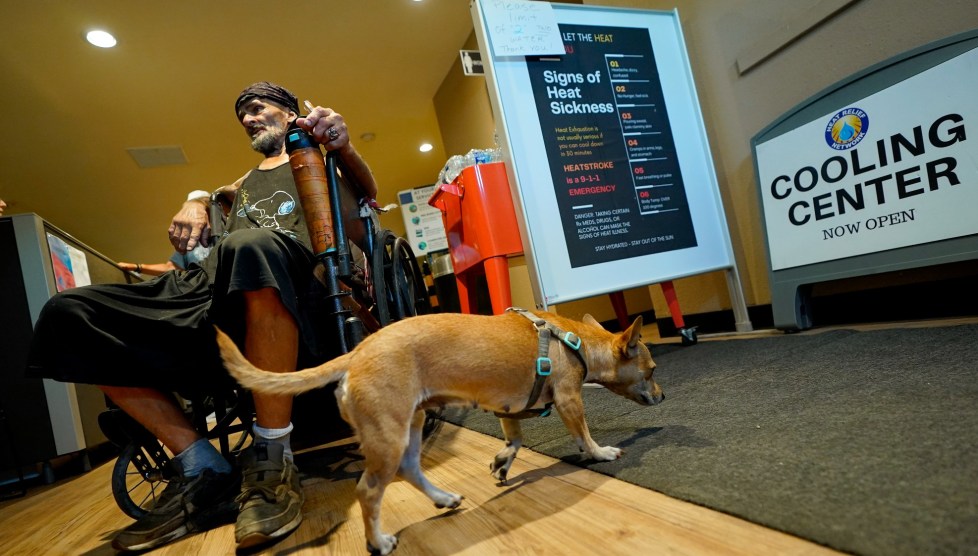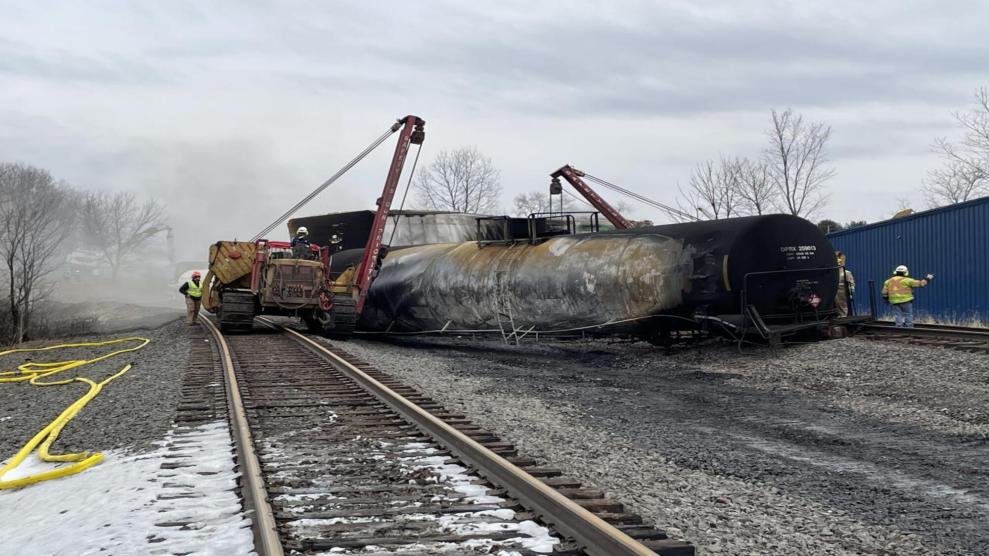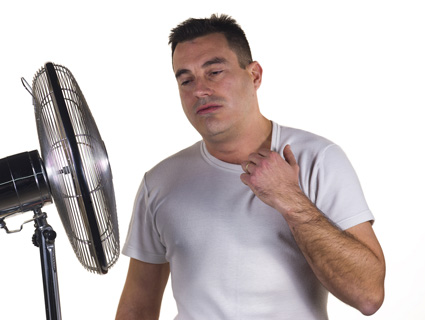
A train sits in an Amtrak maintenance facility in California.Lezlie Sterling/Sacramento Bee/ZUMA
This story was originally published by Grist and is reproduced here as part of the Climate Desk collaboration.
One of the iconic sensory experiences of riding a train is actually the sound of ingenuity. As steel railroad tracks heat up, they grow: Eighteen hundred feet of rail expands by more than an inch for every 10 degrees Fahrenheit of temperature increase. So rails used to be laid down in sections — each between 30 and 60 feet long — with small gaps.
“The very specific railway noise that you hear — chuchat … chuchat … chuchat … chuchat … chuchat — is because there is a gap between the rails, and this gap is meant for such expansion,” said Dev Niyogi, who studies urban climate extremes at the University of Texas at Austin.
Still, in a severe heat wave, the rail can swell until the underlying ties can no longer contain it. Then the rail gets visibly wavy, morphing into what’s known as a sun kink. That’s a serious hazard for trains, which can derail on misaligned tracks. In extreme cases, the track can violently buckle, going from a straight shot to grotesque curves almost instantly. So if it’s excessively hot out, rail services will slow their trains as a precaution, which provides less of the mechanical energy that can lead to buckling. Amtrak, for instance, restricts speeds to 80 miles per hour if the rail temperature hits 140 degrees. That was partly the reason behind Amtrak delays in the Northeast Corridor, which runs between Washington, D.C. and Boston, during a brutal heat wave last month. (Amtrak did not respond to multiple requests to comment for this story.)
As extreme heat waves get worse, more tracks will turn into sun kinks — disrupting commuter rail service that reduces carbon emissions and slows that warming. In 2019, a study estimated that the U.S. rail network could see additional delay costs totaling between $25 billion and $45 billion by the year 2100, in a scenario that assumed greenhouse gas emissions decline in the next 20 years.
Compared to a tree falling on top of a track and blocking traffic, or a switch breaking, heat is a much larger, harder problem for rail operators to deal with. “Heat waves tend to be regional, so the impacts can be huge,” said Jacob Helman, one of the author’s of that 2019 study and a senior climate consultant at Resilient Analytics, which provides infrastructure vulnerability assessments. “It can impact the entire Northeast Corridor over the course of five days.”
As climate change drives hotter and longer heat waves, companies are reevaluating their operations and adapting new technologies. Railroads already use remote sensors to determine the temperature of their rails, but are getting still more sophisticated as heat waves intensify. They’re using computer modeling, for example, to figure out how to make tracks more resistant to buckling, among many other steps. “The industry is implementing new ways to use advanced sensors, satellite imaging, and AI to constantly monitor track health and respond to any potential hazards,” said Scott Cummings, assistant vice president of research and innovation at MxV Rail, a subsidiary of the Association of American Railroads.
In 2019, a study estimated that the U.S. rail network could see additional delay costs totaling between $25 billion and $45 billion by the year 2100, in a scenario that assumed greenhouse gas emissions decline in the next 20 years.
While those gaps in the rail reduce the problem of buckling, each wheel of a train rolling over each gap results in wear and tear both on the rail and the cars. In response, railroads have for decades been deploying “continuous welded rail,” or CWR — segments of track stretching a quarter mile or more. CWR is held firmly in place by concrete ties (the strips under the rails that used to be made of wood), themselves held in place with ballast stones poured in between them. “It’s all just so much more rigid,” said Daniel Pyke, a rail expert at Sensonic in the United Kingdom, which makes train safety tech. “You’ve got so much more mass there to keep everything in place.”
Railroads even adapt tracks to a specific climate: By installing continuous welded rail on a day with the right conditions, crews prepare it for the local high and low temperatures. “Tracks are laid and secured at the ‘neutral temperature,’ which is the average temperature of the rails,” said Farshid Vahedifard, a professor of civil and environmental engineering at Tufts University who studies the impact of climate change on infrastructure. “This helps ensure that the rail remains stable throughout temperature fluctuations.” As regional temperatures rise, railroads might opt to lay down track on hotter days, thus preparing the rail for increasingly extreme heat. (Though when the rails get cold in winter, they contract, which can cause cracking.)
Another intervention is painting the rails white, which reflects a good amount of the sun’s energy off the steel. “It sounds crazy,” Pyke said, “but it works.” It’s labor-intensive — you have to keep reapplying because of the wear-and-tear on the paint and the fact that it dirties over time — but track-mounted machines can do the work quickly.
A new technology known as distributed acoustic sensing uses fiber optic cables running along railways to “listen” for defects. Disturbances on the track jostle the optics, changing how light travels through them. That’s analyzed by a special device to determine whether a rockfall has crashed into the tracks, or if a crack has formed in the rails, as each kind of disturbance has its own unique signal.
As the track heats up and expands, the fiber optics already hear “thermal pops.” Theoretically, Pyke said, Sensonic’s technology could detect the unique ground vibrations associated with buckling. They’d just need data — perhaps they can manually heat up a test track to induce a sun kink — to train the algorithm on what to listen for. “We already produced some rock fall, landslide sensors, and they’re looking for ground vibration,” Pyke said. “So I would imagine — I can’t promise — but I would imagine we would tweak those to be able to detect it.”
If railroads can get better data on their vulnerability to buckling — like specific track temperatures over wide areas, instead of relying on inferences from local air temperatures — they could more accurately determine how much to slow trains as a precaution. That would avoid delays, keep commuters from returning to their cars, save railroads money, and generally make trains safer. “You can make more informed decisions about speed orders,” said Helman from Resilient Analytics. “Maybe it doesn’t need to be 40 miles per hour. Maybe it only needs to be 10. Maybe you don’t need it at all.”

















